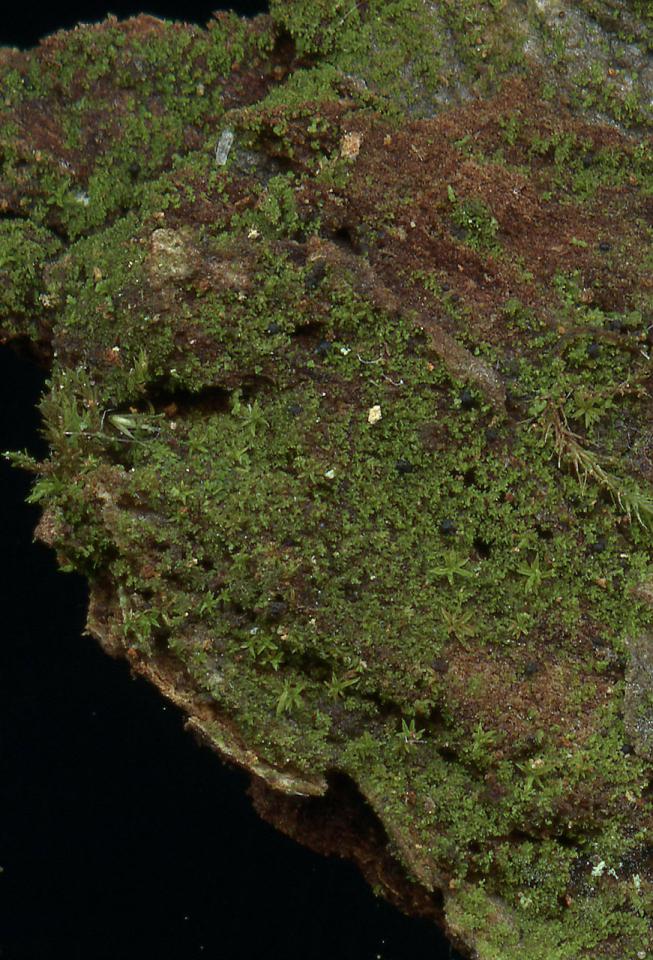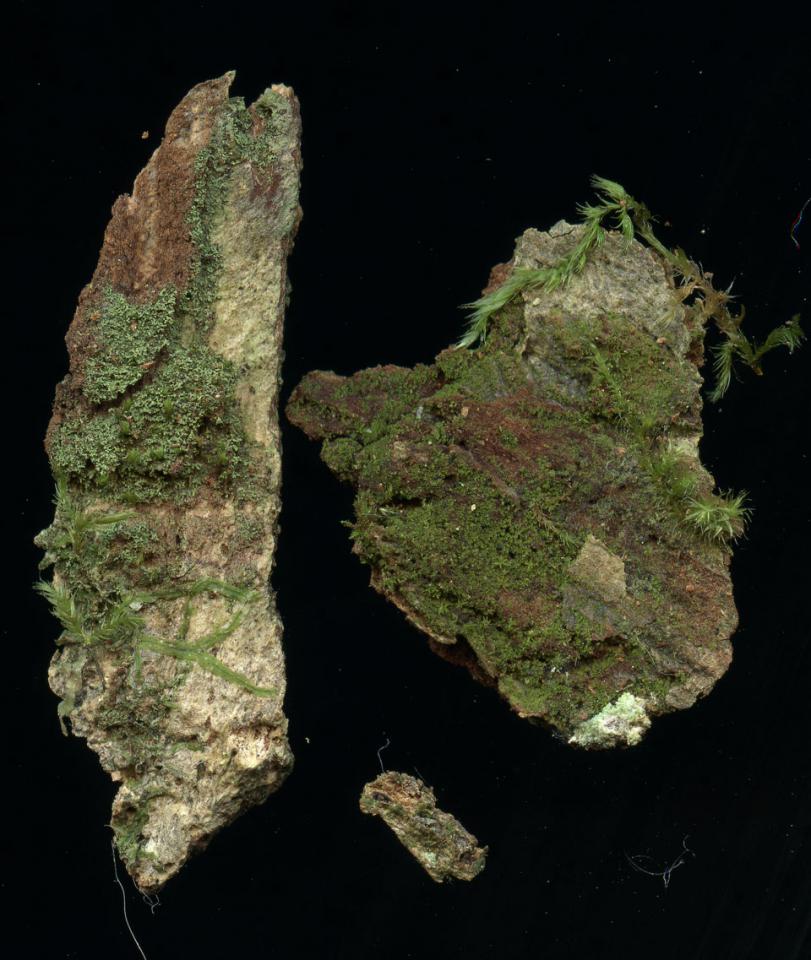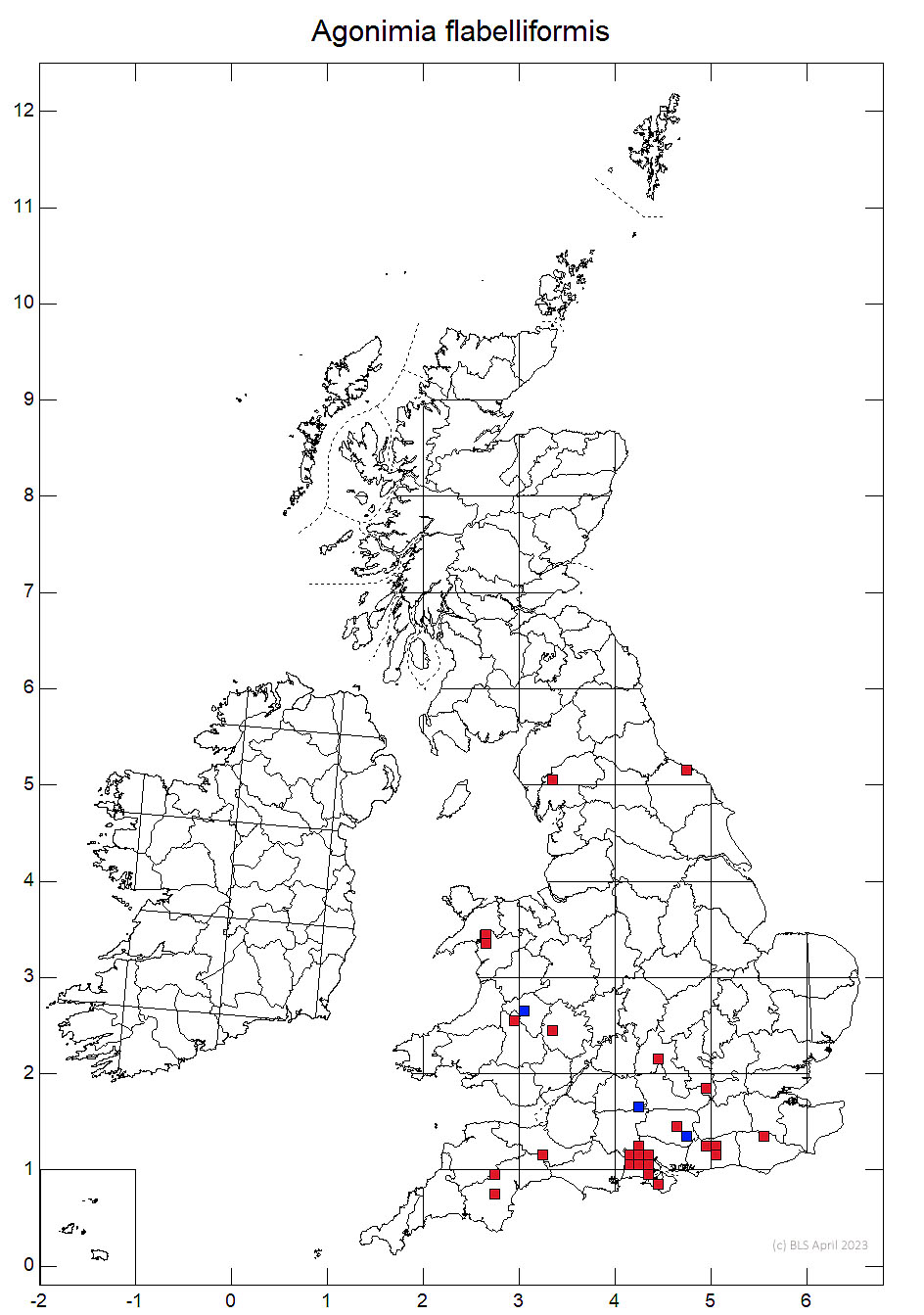Agonimia flabelliformis
A minutely squamulose Agonimia of damp base rich bark in humid woodlands. Occurs in both old growth woodlands and on older trees in younger woodlands. Separated from Agonimia allobata by the squamulose thallus and from Agonimia octospora by the squamules being much smaller and a darker green in colour and by having smaller spores.
This lichen can easily be overlooked as moss protonema, but once spotted the combination of minute fan-shaped highly dissected, bright green squamules and scattered black perithecia with a pimple about the ostiole is distinctive. It can be confused with Agonimia octospora but this larger, with lobes 40–100 μm wide and pale grey-green as opposed to the narrower 20–40 μm wide and brighter green lobes of A. flabelliformis. Agonimia octospora is typically sterile but A. flabelliformis normally has perithecia and has shorter spores 28–36 μm long as opposed to those of A. octospora, which are over 60 μm long. See http://fungi.myspecies.info/all-fungi/agonimia-flabelliformis
Found on base rich damp bark, often with base-demanding bryophytes such as Neckera complanata in humid locations on older trees. However, it is not confined to veteran trees or old growth woodlands. It can be found on older trees in abandoned coppices as well as old pasture woodlands. Agonimia allobata is often found in the same habitats.

Long known to some recorders as a squamulose form of Agonimia allobata but not separately recorded, so many Agonimia allobata records will refer to this species. Distribution still not well know but possibly more southern than Agonimia allobata. At least as frequent as Agonimia allobata in the south but appears to be rarer to the north. Probably a widespread if local south western species. Recently also recorded from Ireland.
A Nationally Scarce species listed as a Notable species and as an indicator species in the Southern Oceanic Woodland Index by Sanderson et al (2018). Not yet assessed for the Red List but appears to be a relatively mobile lichen and is not likely to be threatened nationally, but could be lost locally to inappropriate woodland management and loss of older trees, including to Ash Dieback.
Sanderson, N. A. Wilkins, T., Bosanquet, S. & Genney, D. (2018) Guidelines for the Selection of Biological SSSIs. Part 2: Detailed Guidelines for Habitats and Species Groups. Chapter 13 Lichens and associated microfungi. Joint Nature Conservation Committee 2018 https://hub.jncc.gov.uk/assets/330efebf-9504-4074-b94c-97e9bbdbe746
http://fungi.myspecies.info/all-fungi/agonimia-flabelliformis


